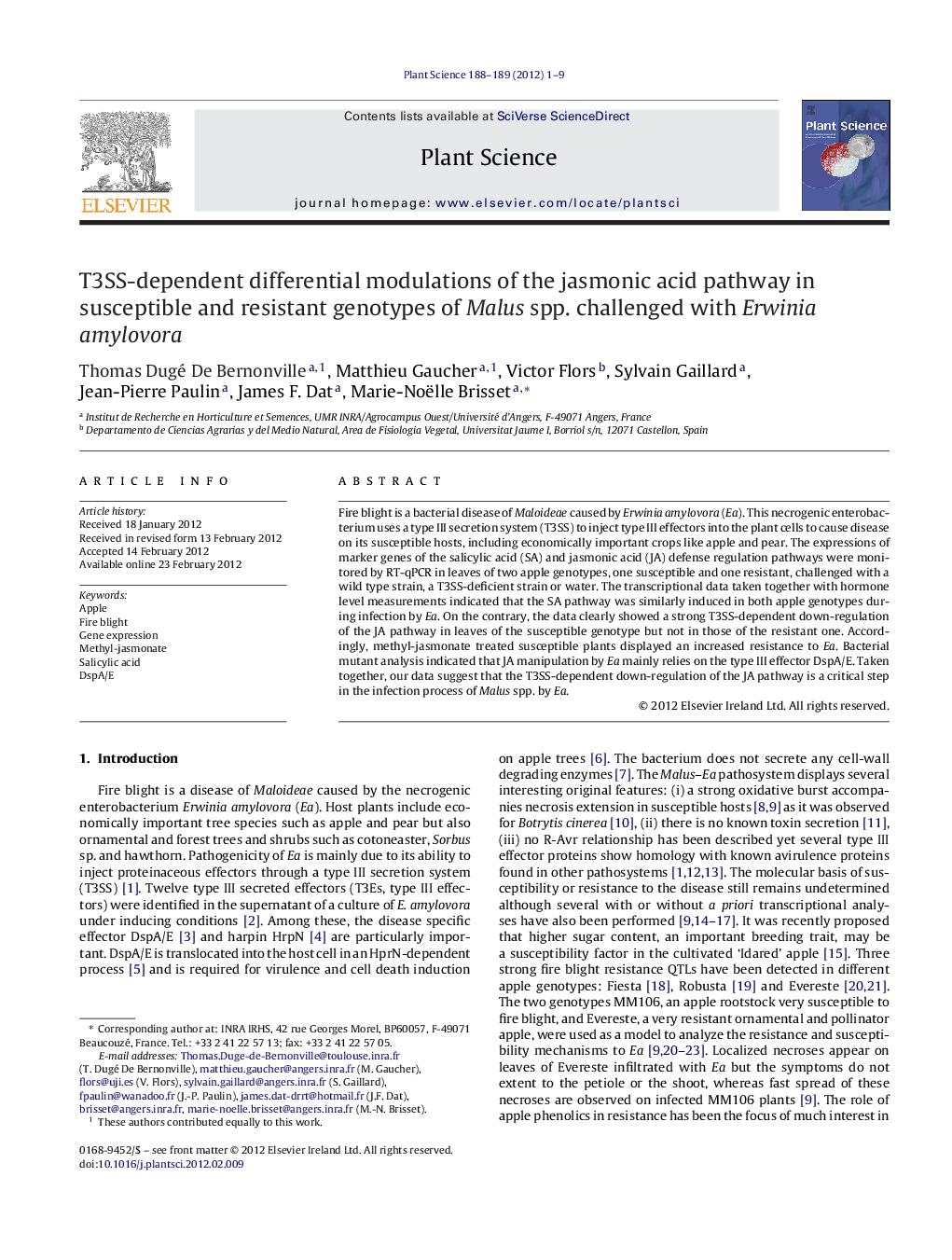| Article ID | Journal | Published Year | Pages | File Type |
|---|---|---|---|---|
| 2017362 | Plant Science | 2012 | 9 Pages |
Fire blight is a bacterial disease of Maloideae caused by Erwinia amylovora (Ea). This necrogenic enterobacterium uses a type III secretion system (T3SS) to inject type III effectors into the plant cells to cause disease on its susceptible hosts, including economically important crops like apple and pear. The expressions of marker genes of the salicylic acid (SA) and jasmonic acid (JA) defense regulation pathways were monitored by RT-qPCR in leaves of two apple genotypes, one susceptible and one resistant, challenged with a wild type strain, a T3SS-deficient strain or water. The transcriptional data taken together with hormone level measurements indicated that the SA pathway was similarly induced in both apple genotypes during infection by Ea. On the contrary, the data clearly showed a strong T3SS-dependent down-regulation of the JA pathway in leaves of the susceptible genotype but not in those of the resistant one. Accordingly, methyl-jasmonate treated susceptible plants displayed an increased resistance to Ea. Bacterial mutant analysis indicated that JA manipulation by Ea mainly relies on the type III effector DspA/E. Taken together, our data suggest that the T3SS-dependent down-regulation of the JA pathway is a critical step in the infection process of Malus spp. by Ea.
⺠Erwinia amylovora (Ea) is responsible for the fire blight on apple (Malus spp.). ⺠Jasmonic acid (JA) pathway was analyzed in infected leaves of apple. ⺠A strong down-regulation of the JA pathway was observed in a susceptible genotype. ⺠Methyl-JA application to susceptible plants confers resistance to Ea. ⺠Manipulation of JA pathway may be critical for a successful infection by Ea.
